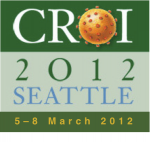Lopinavir/ritonavir monotherapy in children
1 April 2012. Related: Conference reports, Paediatric care, CROI 19 (Retrovirus) 2012.
 Polly Clayden, HIV i-Base
Polly Clayden, HIV i-Base
Induction/maintenance strategies in children are frequently discussed but underexplored and documented.
A poster authored by Pope Kosalaraksa and colleagues from the HIV-NAT 077 study team showed week 144 results for virlogically suppressed Thai children switching to lopinavir/ritonavir (LPV/r) monotherapy.
In this study children with two consecutive viral load results <50 copies/mL at least 3 months apart while receiving double PI-containing second line regimens for at least 12 months were switched to LPV/r monotherapy. Virological failure was defined as two viral load results >500 copies/ mL or three of >50 copies/mL. Children failing LPV/r monotherapy resumed treatment with their previous double PI regimen. The primary endpoint was the proportion of children with virological suppression <50 copies/mL at 144 weeks.
There were 40 children enrolled in the study, of which 90% received saquinavir as their second PI and the remainder indinavir. 3TC was used by 28%, AZT by 10% and EFV by 5%. At the time of enrollment the children were a median age of 11.7 (IQR 10.2-13.5) years, weight of 29.4 (IQR 24.1 – 40.20) kg and CD4 percentage 27% (IQR 23.5-29.5%) cells/mm3.
None of the children had disease progression over 144 weeks of follow up, one child died in a car accident and two were lost to follow up.
At 144 weeks 31/37 (83.8%) were virologically suppressed. The proportion of children remaining on monotherapy with virological suppression was 22/24 (92%). Eleven children experienced virological failure with lopinavir monotherapy with a median viral load measurement of 1740 (IQR 598-21,450) copies/mL. No major LPV/r mutations (L10F, M46I, L76V, V82A) were reported among 10/11 children who failed and genotype testing. When they resumed their previous double PI regimen, 7/11 (63%) children had virological suppression at week 144.
In multivariate analysis viral load at switch to LPV/r monotherapy of >50 copies/mL was the only predictor of failure, OR 4.4 (95% CI, 1.3-14.8). Although all children had <50 copies/mL at screening, 10% had >50 copies/mL at baseline. Sex, CDC class, CD4 percent nadir, CD4 percent at switch and adherence by pill count were not associated.
There were no significant changes in CD4 percent, fasting cholesterol, triglyceride, and glucose from baseline. The investigators noted that frequent viral load monitoring is needed for early detection of virologic failure with this strategy.
comment
This study shows a high rate of failure in about a third of children who switched to LPV/r monotherapy. Whether there are children that could benefit from this induction/maintenance strategy (probably not treatment experienced) remains an interesting question in RLS, where starting with a LPV/r-containiing regimen in infancy is gaining momentum in settings with concerns about cost and NRTI toxicity.
Looking at darunavir/r monotherapy vs darunavir/r in a triple regimen and also once vs twice daily is currently under discussion for PENTA 17.
Ref: Kosalaraksa P et al. Lopinavir/ritonavir monotherapy in HIV+ children; week 144 results. 19th CROI. Seattle WA. March 5-8 2012. Poster abstract 962.
http://www.retroconference.org/2012b/Abstracts/43511.htm

